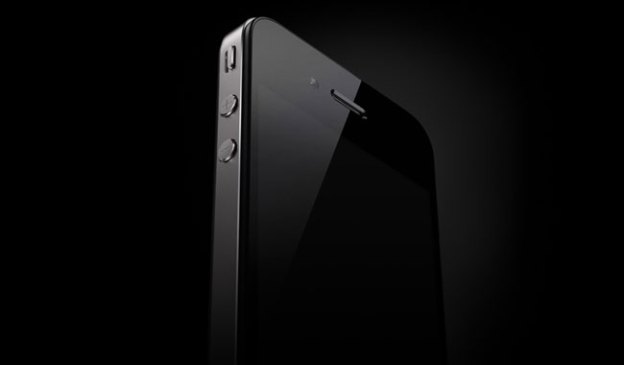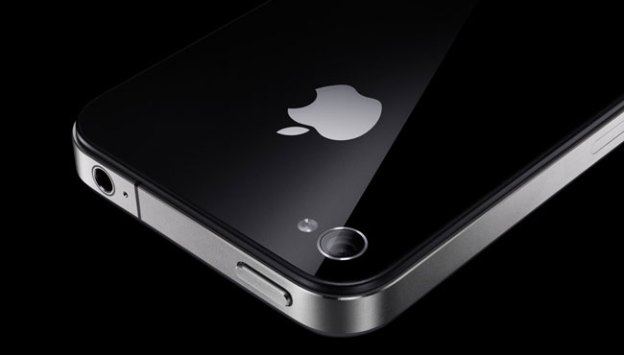
The tech rumor mill ramped into overdrive Monday morning with predictions from two leading market analysts that Apple has a less-expensive model of its highly popular iPhone handset in the works. In fact, according to Deutsche Bank analyst Chris Whitmore, Apple plans to release not one, but two new iPhones this year: The first, a full-revamped ‘superphone,’ presumably called iPhone 5; the other, a moderate upgrade from the iPhone 4, possibly called iPhone 4S, which will be sold unlocked, with a pre-paid voice plan option, and cost around $350. This second device is meant to compete with the variety of lower-priced Nokia and BlackBerry handsets available, Whitmore says, as well as the Goliath competition from devices running Google’s Android operating system.
While it’s nearly impossible for anyone outside the walled garden of Cupertino to know for sure what Apple has in the works, the mounting evidence suggests the rumored cheaper iPhone is all but a sure thing. Here’s a look at the past reports, and why they should be believed.
‘iPhone Nano’ rumors abound
The first believable reports of a less expensive iPhone popped up in early February of this year. According to an unnamed Bloomberg source, who claimed to have seen a prototype version of the device sometime in 2010, the prototype ‘iPhone Nano’ measured about one-third the size of the 3.5-inch iPhone 4 and had no “home” button. It also had a screen similar to the current iPhone, as opposed to new, more expensive components. The source said that Apple was considering selling the handset for $200 without a contract.
This report, published on February 10, was followed just days later by a Wall Street Journal piece that offered more evidence that Apple had a mini-iPhone up its sleeve. In the WSJ version, the device measured about half the size of the iPhone 4. It would also cost somewhere around half as much as the current iPhone — about $300 to $350. Sources said that the low cost of the device would allow carriers to offer the cheaper iPhone for free, or at least close to it.

It should be noted that, while the WSJ piece didn’t have any sources willing to go on record (who does these days?), the article also included a few other predictions that turned out to be correct, namely that Apple would transform MobileMe into a part of a new iTunes streaming, i.e. iCloud. Of course, just because the report was more or less right about one prediction doesn’t mean everything is correct — but it does increase the likelihood of its accuracy.
Amidst the iPhone Nano rumors, The New York Times reported on February 17 — five days after the WSJ report — that Apple would release a less expensive (but not smaller) version of the iPhone, citing an anonymous source who “worked on multiple versions of the device.”
To further corroborate these reports, Apple chief operating office Tim Cook told Bernstein Research analyst Toni Sacconaghi that Apple didn’t want its products to be “just for the rich,” and that the company is “not ceding any market.” While these comments far from confirm the existence of a less expensive iPhone, they do show that Apple knows it has a weakness — its gadgets just cost too much. It also shows that the company has plans to deal with that issue, and was willing to admit as much soon after the aforementioned reports about a smaller, cheaper iPhone brought talk of such a device front and center of the tech world stage.
Enter the “iPhone 4S”
While the iPhone Nano rumors died down, reports of a new device filled their place: the “iPhone 4S.” We first learned of this alleged device in the middle of April. A knowledgeable source told 9to5Mac that game app developers had received models of a prototype, dubbed the iPhone 4S, which was outfitted with Apple’s powerful A5 processor, the same CPU that drives the iPad 2.
Aside from the upgrade from the A4 CPU to the A5, sources said the iPhone 4S looked nearly identical to the iPhone 4, so much so that “there is no way anyone can tell it’s not an iPhone 4 based on the phone’s exterior,” 9to5Mac reported.

On April 25, Chinese tech blog MIC Gadget posted pictures of what appeared to be a white iPhone 4S. The device, which looked like a prototype, had the proximity sensor in a different place than the iPhone 4, and the bezel around the screen was about half has wide as the current iPhone, making the display slightly larger. The site claimed it was an iPhone 4S. That assertion, of course, went unconfirmed.
iPhone Nano, iPhone 4S rumors combine
Slightly less than a month after the iPhone 4S revelation, market analyst Peter Misek told Forbes that the next iPhone would, in fact, be the iPhone 4S — not the iPhone Nano, and not the iPhone 5. Like the earlier source, Misek said that the 4S would “include minor cosmetic changes,” rather than a full redesign, as well as an A5 processor. He added that device would also sport “better cameras” and support HSPA+ connectivity (the type of 4G currently used by T-Mobile and AT&T). Also, the iPhone 4S would work on all US carriers.
Misek said that Apple also had originally planned to release the iPhone 5 in the fall, along side the iPhone 4S, but that the Qualcomm 4G LTE chip it hoped to put in the iPhone 5 wasn’t ready for mass production due to performance issues. So, the iPhone 5 would wait until 2012 and the 4S would serve as Apple’s 2011 update.
This was far from the last we heard of the iPhone 4S, but no new major developments about the device appeared between the above report on May 13 and Monday.
iPhone 5
Despite the oft-mentioned rumor that the iPhone 5 wouldn’t appear until 2012, a BGR report from June 21 suggested that a 2011 release of the “radically redesigned” device — not the moderately upgraded iPhone 4S — was still within the realm of possibility. The BRG report, however, pointed to an August release. If Monday’s analyst predictions are true, that’s far too soon to expect the iPhone 5 — though an August announcement isn’t entirely out of the question.
What will these redesigns include? Here’s the rumor run-down, thus far: The iPhone 5 will have a larger, 4-inch, edge-to-edge screen; an aluminum back; a curved “tear drop” design (similar to the MacBook Air); and a curved glass screen.

To recap: The iPhone 4S, by comparison, is said to have a similar design to the iPhone 4, but possibly with a larger screen. It will likely also include the A5 processor, and an 8-megapixel rear-facing camera (up from the 5-megapixel specification of the iPhone 4’s camera). If all the most recent rumors prove accurate (and they very well might), the device will cost significantly less than the iPhone 5 — possibly half as much — and will sell unlocked, without a contract.
The competition
The entire reason for the iPhone 4S’s purported existence is that the festering hoard of lower-priced Android handsets are eating Apple for lunch. While reports indicate that Android’s meteoric rise has started to come back toward Earth, it remains a far wider-used OS. (As of March, Android held on to about 49.5 percent market share, compared to Apple’s 29.5 percent.) On top of that, some say that even Microsoft’s Windows Phone OS, once it’s on board the Nokia juggernaut, will easily surpass Apple in the next three or four years. The only way to beat back the surrounding forces, experts say, is for Apple to plunge into the lower consumer pools with the rest. Thus, the iPhone 4S.
Conclusion
The near-constant and surprisingly consistent flow of iPhone 4S rumors doesn’t make the device real. And even if it is real, and Apple plans to release it, that doesn’t mean we’ll see it anytime soon. That said, the nature of the rumors (they make sense financially and logistically for Apple), and their sources (Bloomberg, Wall Street Journal, The New York Times, even Apple’s COO Tim Cook) all add heaping handfuls of validity the hearsay reports. Plus, if Apple plans to release two new iPhones — something that’s hard to believe mostly because they’ve never done it before — it clears up a lot of the confusion that’s surrounded many of these reports.
We will all still have to wait to find out what, if any, of this is true. But right now, we’d place our bets on Apple unveiling a less expensive iPhone to the world come this fall.
Editors' Recommendations
- A big iPhone update is right around the corner
- How to fix iMessage activation errors on your iPhone
- One of the most iconic iPhone accessories is back — and it’s great
- Are you having iPhone alarm problems? A fix is coming soon
- Best iPhone 14 deals: Unlocked and refurbished


